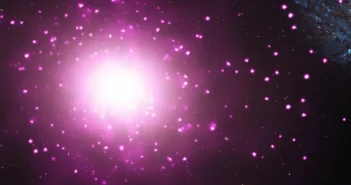
Features
Supermassive Black Hole in a Super Tiny Galaxy Found with JWST
Using high-resolution JWST observations, a recent study has found a supermassive black hole at the center of an ultracompact dwarf galaxy.

Features
Kicking Neutron Stars from the Nest
Neutron stars are born running, and recent research explores just how fast they start off.

Astrobites
Are Quasars Growing in Secret?
Astrobites reports on supermassive black holes in the early universe that may have been hiding phases of their growth.

Features
Scars from a Black Hole
Say a star wandered close enough to a black hole to be partially ripped apart, but lived to tell the tale. What does the rest of its life look like?

Astrobites
A Dust Curve That Breaks the Mold
Astobites reports on a surprising dust curve in a distant galaxy that challenges what we know about cosmic dust.



